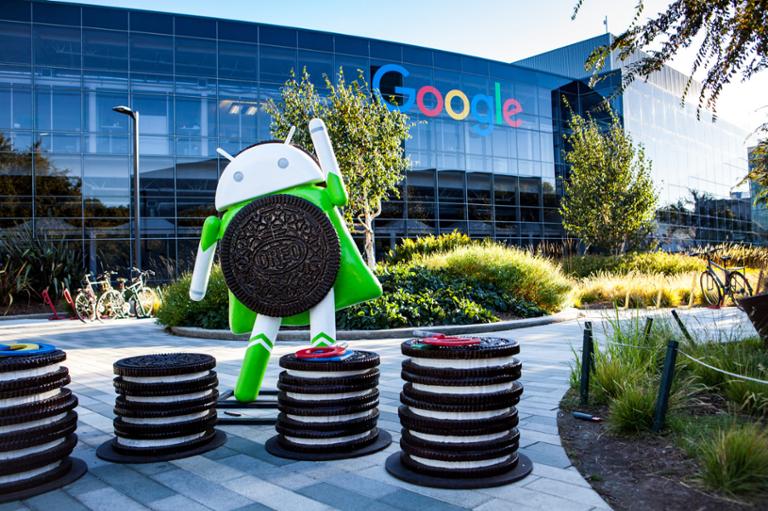 When it comes to dominating smartphones, Google faces a bit of a challenge: the next billion device users will almost certainly live in the developing world, where bandwidth is often reduced and the hardware is necessarily low-powered and cheaper. As a result, the company has adopted its mobile operating system, Android, to meet this paradigm. Known as Android Oreo (Go edition), this version of the OS focuses on data management and optimizations that allow apps to run an average of 15 percent faster. Preinstalled Google apps also take up 50 percent less space than before. The release is focused primarily on OEMs that build entry-level and low-powered devices. In a bid to encourage app downloading, Google has retooled the Google Play Store to highlight apps designed to work best with a particular device. “Devices running Android Oreo (Go edition) also come with Google’s data saver features turned on by default,” read Google’s corporate blog posting on the matter. “For example, Data Saver in Chrome saves the average user more than 600MB of data per year. You can also manage which apps can use background data with our built-in data saver feature, giving you more control over how your data is used.” Meanwhile, Android 8.1 Oreo is rolling out to phones such as the Pixel and Nexus. This “main” version of the operating system features boosted battery life (thanks to limiting some background processes), adaptive icons and badges, picture-in-picture support that lets users use two apps at once, and Java 8 APIs and runtime optimizations. (And don't forget a Neural Networks API, a machine-learning runtime to support app-based machine-learning capabilities, because machine learning is officially the Next! Big! Thing!) For developers, Google has released Android Studio 3.0 with new tools and toys, including an SDK for Instant Apps, which allows users to run apps without needing to install anything. In addition, there’s support for Kotlin, an official Android programming language, which is well worth checking out if you’re interested in a language that’s rapidly drawing attention.
When it comes to dominating smartphones, Google faces a bit of a challenge: the next billion device users will almost certainly live in the developing world, where bandwidth is often reduced and the hardware is necessarily low-powered and cheaper. As a result, the company has adopted its mobile operating system, Android, to meet this paradigm. Known as Android Oreo (Go edition), this version of the OS focuses on data management and optimizations that allow apps to run an average of 15 percent faster. Preinstalled Google apps also take up 50 percent less space than before. The release is focused primarily on OEMs that build entry-level and low-powered devices. In a bid to encourage app downloading, Google has retooled the Google Play Store to highlight apps designed to work best with a particular device. “Devices running Android Oreo (Go edition) also come with Google’s data saver features turned on by default,” read Google’s corporate blog posting on the matter. “For example, Data Saver in Chrome saves the average user more than 600MB of data per year. You can also manage which apps can use background data with our built-in data saver feature, giving you more control over how your data is used.” Meanwhile, Android 8.1 Oreo is rolling out to phones such as the Pixel and Nexus. This “main” version of the operating system features boosted battery life (thanks to limiting some background processes), adaptive icons and badges, picture-in-picture support that lets users use two apps at once, and Java 8 APIs and runtime optimizations. (And don't forget a Neural Networks API, a machine-learning runtime to support app-based machine-learning capabilities, because machine learning is officially the Next! Big! Thing!) For developers, Google has released Android Studio 3.0 with new tools and toys, including an SDK for Instant Apps, which allows users to run apps without needing to install anything. In addition, there’s support for Kotlin, an official Android programming language, which is well worth checking out if you’re interested in a language that’s rapidly drawing attention. Google's Android Oreo Tweaks Apps Options
 When it comes to dominating smartphones, Google faces a bit of a challenge: the next billion device users will almost certainly live in the developing world, where bandwidth is often reduced and the hardware is necessarily low-powered and cheaper. As a result, the company has adopted its mobile operating system, Android, to meet this paradigm. Known as Android Oreo (Go edition), this version of the OS focuses on data management and optimizations that allow apps to run an average of 15 percent faster. Preinstalled Google apps also take up 50 percent less space than before. The release is focused primarily on OEMs that build entry-level and low-powered devices. In a bid to encourage app downloading, Google has retooled the Google Play Store to highlight apps designed to work best with a particular device. “Devices running Android Oreo (Go edition) also come with Google’s data saver features turned on by default,” read Google’s corporate blog posting on the matter. “For example, Data Saver in Chrome saves the average user more than 600MB of data per year. You can also manage which apps can use background data with our built-in data saver feature, giving you more control over how your data is used.” Meanwhile, Android 8.1 Oreo is rolling out to phones such as the Pixel and Nexus. This “main” version of the operating system features boosted battery life (thanks to limiting some background processes), adaptive icons and badges, picture-in-picture support that lets users use two apps at once, and Java 8 APIs and runtime optimizations. (And don't forget a Neural Networks API, a machine-learning runtime to support app-based machine-learning capabilities, because machine learning is officially the Next! Big! Thing!) For developers, Google has released Android Studio 3.0 with new tools and toys, including an SDK for Instant Apps, which allows users to run apps without needing to install anything. In addition, there’s support for Kotlin, an official Android programming language, which is well worth checking out if you’re interested in a language that’s rapidly drawing attention.
When it comes to dominating smartphones, Google faces a bit of a challenge: the next billion device users will almost certainly live in the developing world, where bandwidth is often reduced and the hardware is necessarily low-powered and cheaper. As a result, the company has adopted its mobile operating system, Android, to meet this paradigm. Known as Android Oreo (Go edition), this version of the OS focuses on data management and optimizations that allow apps to run an average of 15 percent faster. Preinstalled Google apps also take up 50 percent less space than before. The release is focused primarily on OEMs that build entry-level and low-powered devices. In a bid to encourage app downloading, Google has retooled the Google Play Store to highlight apps designed to work best with a particular device. “Devices running Android Oreo (Go edition) also come with Google’s data saver features turned on by default,” read Google’s corporate blog posting on the matter. “For example, Data Saver in Chrome saves the average user more than 600MB of data per year. You can also manage which apps can use background data with our built-in data saver feature, giving you more control over how your data is used.” Meanwhile, Android 8.1 Oreo is rolling out to phones such as the Pixel and Nexus. This “main” version of the operating system features boosted battery life (thanks to limiting some background processes), adaptive icons and badges, picture-in-picture support that lets users use two apps at once, and Java 8 APIs and runtime optimizations. (And don't forget a Neural Networks API, a machine-learning runtime to support app-based machine-learning capabilities, because machine learning is officially the Next! Big! Thing!) For developers, Google has released Android Studio 3.0 with new tools and toys, including an SDK for Instant Apps, which allows users to run apps without needing to install anything. In addition, there’s support for Kotlin, an official Android programming language, which is well worth checking out if you’re interested in a language that’s rapidly drawing attention. 

